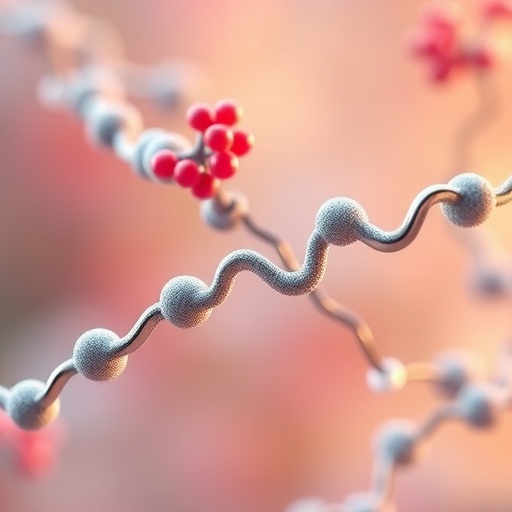In the intricate world of microbial metabolism, α/β hydrolase fold thioesterases (TEs) are emerging as pivotal players, particularly in the biosynthesis of polyketides and non-ribosomal peptides. These enzymes, categorized primarily into type-I and type-II, have long been recognized for their essential contributions to the assembly lines of complex natural products. However, ongoing research is unveiling a broader spectrum of functions beyond their traditional roles, providing fresh insights into their versatile nature and applications in biotechnology.
Type-I thioesterases, often found fused to the C-terminus of modular enzyme complexes, are instrumental in shaping the final molecular structures of assembly-line products. Their unique positioning allows them to interact closely with other enzymatic components, effectively dictating the molecular conformation and, by extension, the bioactivity of the resultant compounds. Their role as molecular architects underscores their significance in the biosynthetic pathways of organisms, leading to diverse natural product profiles.
On the other hand, type-II thioesterases exist independently of other enzymes, performing critical proofreading functions that ensure the fidelity of the assembly line processes. By hydrolyzing misattached acyl thioesters, these enzymes help maintain the overall efficiency and accuracy of non-ribosomal peptide and polyketide synthesis. Their standalone nature not only exemplifies a different functional strategy but also accentuates the complexity of metabolic regulation at play during synthesis.
Recent studies have broadened our understanding of TEs, revealing previously unrecognized, non-canonical functions that challenge traditional paradigms. These discoveries indicate that TEs may participate in regulatory roles, enzymatic cascades, and even the modulation of metabolic pathways, which could have far-reaching implications for industrial applications and natural product discovery.
For instance, some thioesterases have been implicated in the regulation of gene expression through the modulation of intermediary metabolites. By participating in the fine-tuning of metabolic flux, these enzymes can influence the production rates of secondary metabolites, providing an additional layer of complexity to their functional repertoire. This regulatory capability suggests that TEs may serve as critical control points within biosynthetic networks, thereby impacting the yield and diversity of bioactive compounds.
Moreover, the potential involvement of thioesterases in the assembly of non-canonical peptide structures highlights another dimension of their functional diversity. As researchers delve into the genomic and enzymatic machinery of various bacterial species, newfound thioesterase variants may be uncovered, each presenting unique substrate specificity and substrate-binding mechanisms. Such discoveries promise to unlock a treasure trove of novel compounds with conceivable therapeutic benefits.
Notably, the catalytic mechanisms employed by these TEs may also exhibit variability that influences their substrate utilization. This variability can lead to the generation of unique products that could be harnessed for pharmacological development, emphasizing the exciting potential of TEs in drug discovery. By exploring and optimizing the catalytic characteristics of various thioesterases, scientists can engineer enzymes that produce high-value compounds more efficiently and sustainably.
The advancements in protein engineering and synthetic biology further amplify the significance of TEs. With the advent of CRISPR and other genome-editing technologies, researchers can tailor the genes encoding these enzymes to enhance desired traits, such as substrate selectivity or product yield. This approach not only streamlines the production of valuable metabolites but can also be leveraged to produce compounds that are currently challenging to synthesize using traditional chemical methods.
As the collective understanding of TE functionalities expands, a renewed interest emerges in their potential exploitation for biotechnological applications. From industrial biocatalysis to pharmaceuticals, the diverse capabilities of TEs not only promise enhanced efficiencies in production but also the possibility of accessing novel chemical entities. Such innovations could revolutionize the landscape of drug development and synthetic chemistry.
Furthermore, the study of non-canonical thioesterases fuels the exploration of natural product diversity in unexplored microbial consortia. By harnessing the biosynthetic pathways and enzyme libraries from under-characterized bacterial species, researchers can identify new classes of compounds, potentially leading to the discovery of novel therapeutics. The significance of diverse microbiomes and their contributions to natural product chemistry cannot be overstated, as they represent an uncharted territory rich with biochemical potential.
In conclusion, the expanding repertoire of thioesterase functions sheds light on the intricate and multifaceted roles these enzymes play in microbial biosynthesis. Far from being merely accessory components of biosynthetic pathways, thioesterases reveal themselves to be influential regulators, versatile catalysts, and vital contributors to the natural product landscape. As researchers continue to unravel these complexities, the future of thioesterases promises an exciting intersection of fundamental research and practical applications, heralding a new era of biotechnological innovation.
The exploration of non-canonical thioesterases demonstrates the power of nature’s ingenuity, urging scientists to continually seek out and understand the hidden potentials within microbial metabolic pathways. With each new discovery, the potential for TEs to lead the charge in the discovery of novel drugs and sustainable bioproduction methods grows ever more tangible, opening pathways to solutions for some of modern medicine’s most pressing challenges.
Subject of Research: Non-canonical functions of thioesterases in bacterial non-ribosomal peptide biosynthesis.
Article Title: Non-canonical thioesterases in bacterial non-ribosomal peptide biosynthesis.
Article References: Matsuda, K. Non-canonical thioesterases in bacterial non-ribosomal peptide biosynthesis. J Antibiot 78, 639–650 (2025). https://doi.org/10.1038/s41429-025-00854-3
Image Credits: AI Generated
DOI: October 2025
Keywords: Thioesterases, Non-ribosomal peptides, Biosynthesis, Polyketides, Enzyme functionality, Natural product diversity, Metabolic regulation, Biocatalysis, Protein engineering, Synthetic biology.




